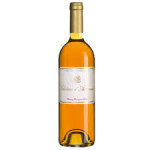Back from Merlot judging

Ellen Wallace, Mondial du Merlot 2015
Photo: Denis Emery / Photo-genic.ch
Two days of judging Merlot wines in Sierre at the Mondial du Merlot prompted reflection on a number of points. The quality of the wine was overall good to very good, with a few exceptions for wines where the cellar needs to do more work. My own table of five judges had one “great gold” wine, which is exciting, and a few gold medal winners, so I’m now keen to hear the results 20 May. They will be announced in Zurich by Vinea, which organizes the international competition, as well as six other major wine competitions.
The number of wines entered was up this year, to 420 I believe, with wines from 41 countries. But 59 percent of the entries were Swiss – understandable, since this is the home country and Merlot is the darling of canton Ticino – and the handful of wines from some countries, such as Bulgaria, left me wishing they had sent more, to give us more information about what this grape can do in different places.
The best of Merlot, the worst of Merlot
The competition lasted three days, but during my two I judged close to 90 Merlot wines from Brazil, Bulgaria, France, Germany, Italy, Switzerland Turkey. The best wines had a common thread of Merlot-ness, no matter where they were from: they go beyond soft, sweet and plummy to more velvety and complex, sometimes with hints of spices, tobacco, pepper. Voluptuous is the word that came to mind several times, with the best we tasted.
The worst shared a common problem that may be a reflection of the mediocre 2013 vintage in some areas, according to Gérald Carrupt of Switzerland’s Provins winery, secretary at my table – they were green, slightly bitter, sometimes with a woolly mouthfeel and tannins. Others lacked acidity, which makes them feel very flat, a problem that sometimes results when the grapes are harvested late, New World style, to obtain lushness and deeper fruit.
Our best group overall was single grape Merlots from 2012, a vintage that seemed to give more balanced wines.
From trendy to being loved for what it is
Merlot has gone through some big popularity swings. In the US it was a trendy smooth wine before Pinot Noir came along and took some of the wind out of its sails a decade ago, but with the mass market borderline plonk losing favour, the better Merlots are gaining a reputation. In New Zealand, it is the second most popular red grape (16 percent) after the country’s famous Pinot Noirs (70 percent of all reds), with more vines planted and production set to increase over the next three years. I learned from fellow judges from these countries that Bulgarian Merlot is getting better (much of its goes into Bordeaux wines) and that it is a major grape in South Africa, which I hadn’t realized.
Men versus women
I don’t think it’s really possible to generalize about this, but this is the first time that I was judging at a table with a majority of women and in at least a couple of cases we were sharply divided along gender lines. The nose of two wines in particular were appreciated by the men and given low marks by the women: both had reduced notes. The Wine Spectator explains this as “‘reduced’ notes generally result from the present of volatile sulfur compounds, or mercaptans; these notes include rotten eggs, rubber, struck matches, sewage and even skunk. There can be a beautiful wine underneath the reductive notes, and sometimes—not always—decanting or vigorous swirling can help these notes blow off.”
A good example of this for me was another wine that I probably judged too quickly, and as a result, too harshly. My first note for it was 83 out of 100, not high enough for a medal, because the nose had a problem that I thought was reduction, and the tannins didn’t appear to me to be well integrated. My table mates all gave it a very high score and we had a lively discussion. The wine had a couple extra minutes as a result, and I swirled my glass and the negative notes I had given it evaporated: it ended up with 89/100 from me and an overall note above 90 that gave it a sound gold medal. It’s not common to ask for a re-mark, maybe 4-5 times out of 90 wines, but this is when you see the value of a group of judges and some scope for discussion.
We blind-taste the wines and the only information we are given afterwards is the appellation and country, so it will be good to see if there are any patterns in the winners this year, if some vintages or some areas come out better than others.
Ellen Wallace
This article was first published in Geneva Lunch and in Ellen’s Wine World.









